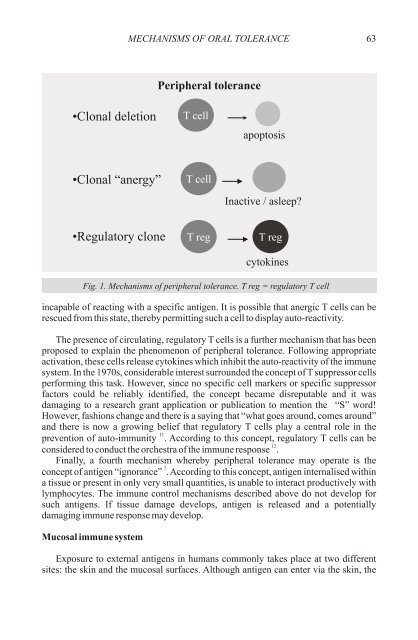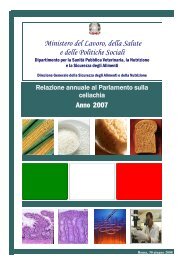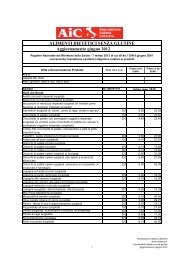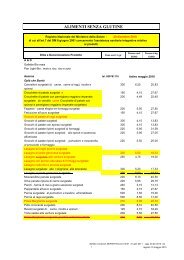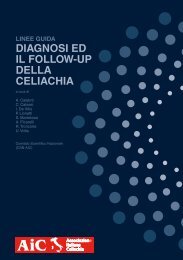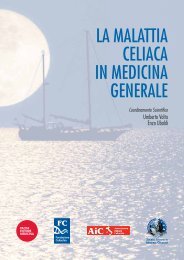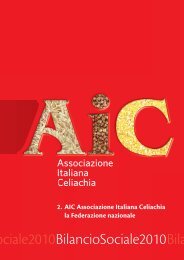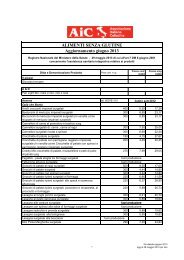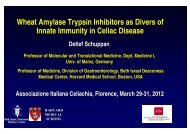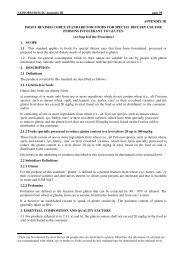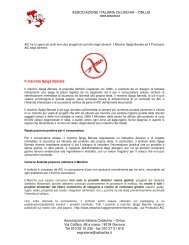primary prevention of coeliac disease - Associazione Italiana ...
primary prevention of coeliac disease - Associazione Italiana ...
primary prevention of coeliac disease - Associazione Italiana ...
You also want an ePaper? Increase the reach of your titles
YUMPU automatically turns print PDFs into web optimized ePapers that Google loves.
MECHANISMS OF ORAL TOLERANCE<br />
63<br />
Peripheral tolerance<br />
•Clonal deletion<br />
T cell<br />
apoptosis<br />
•Clonal “anergy”<br />
T cell<br />
Inactive / asleep?<br />
•Regulatory clone<br />
T reg<br />
T reg<br />
cytokines<br />
Fig. 1. Mechanisms <strong>of</strong> peripheral tolerance. T reg = regulatory T cell<br />
incapable <strong>of</strong> reacting with a specific antigen. It is possible that anergic T cells can be<br />
rescued from this state, thereby permitting such a cell to display auto-reactivity.<br />
The presence <strong>of</strong> circulating, regulatory T cells is a further mechanism that has been<br />
proposed to explain the phenomenon <strong>of</strong> peripheral tolerance. Following appropriate<br />
activation, these cells release cytokines which inhibit the auto-reactivity <strong>of</strong> the immune<br />
system. In the 1970s, considerable interest surrounded the concept <strong>of</strong> T suppressor cells<br />
performing this task. However, since no specific cell markers or specific suppressor<br />
factors could be reliably identified, the concept became disreputable and it was<br />
damaging to a research grant application or publication to mention the “S” word!<br />
However, fashions change and there is a saying that “what goes around, comes around”<br />
and there is now a growing belief that regulatory T cells play a central role in the<br />
11<br />
<strong>prevention</strong> <strong>of</strong> auto-immunity . According to this concept, regulatory T cells can be<br />
12<br />
considered to conduct the orchestra <strong>of</strong> the immune response .<br />
Finally, a fourth mechanism whereby peripheral tolerance may operate is the<br />
7<br />
concept <strong>of</strong> antigen “ignorance” . According to this concept, antigen internalised within<br />
a tissue or present in only very small quantities, is unable to interact productively with<br />
lymphocytes. The immune control mechanisms described above do not develop for<br />
such antigens. If tissue damage develops, antigen is released and a potentially<br />
damaging immune response may develop.<br />
Mucosal immune system<br />
Exposure to external antigens in humans commonly takes place at two different<br />
sites: the skin and the mucosal surfaces. Although antigen can enter via the skin, the


